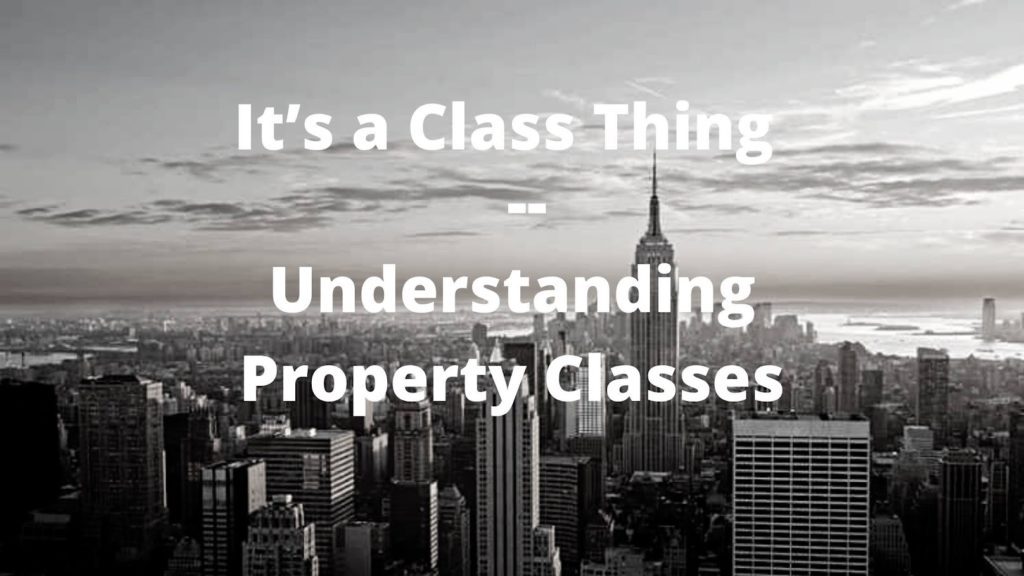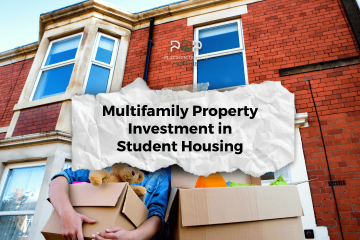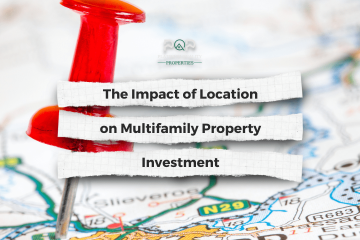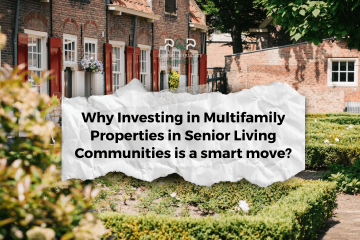Let’s talk about class. No, not the type of class that you have to attend and read books and do homework for. The type of class I’m talking about is all about location, location, location.
In real estate there are 4 different types of property classes—Class A, Class B, Class C and Class D. Class A is the cream of the crop. They are the highest Quality buildings, normally new builds or well-maintained buildings, in their specific area. They all have the best amenities, high-income tenants, and some of the lowest vacancy rates. They are normally on the highest end of many people’s budgets, centrally located to everything and professionally managed. These buildings are also some of the highest in demand because of the quality and location, so they are generally hard to come by.
Class B are obviously a step below Class A. They are generally considered riskier than a Class A property because they are not as nice. These properties are normally older the 15 years and have some maintenance issues that can easily be fixed but current owners have not done it because it is expensive. These apartments are generally easier to get into because the rental income is lower, typically middle-class people live in these type of apartments. These properties may also not have a professional property manager, but in some cases they do. Many investors prefer these type of properties because they are viewed as “add-value” properties since they can be upgraded in certain communal places or even generally upgraded to a B+ class or an A class. Another perk of buying a Class B property is that they can be purchased with a higher CAP rate because they are deemed riskier.
Class C properties are generally older then 20 years and are in the less then desirable locations of cities. They generally need renovations, normally some pretty big structural updated to bring them up to date with current infrastructure guidelines put out by states. These types of properties have the lowest rental income requirements, no amenities, and have the hardest time getting a steady income flow because of the location.
Class D properties are unfortunately the lowest level of properties. They are some of the oldest properties that are up for sale and are either condemned/low occupancy/abandoned. Its also generally located in a bad area of the city that has not been regentrified yet.
So why are these classes important when looking at multifamily properties? Because location is everything to people. As a mom of three small kids, I know that when we were looking at renting that we wanted a Class A or Class B property. We wanted something in a good school district and somewhere safe for our kids to be raised and not have to worry about a high crime rate. When investors are looking at properties to buy/invest in they take these things into consideration.
It’s also important to know what classes you are looking at because while Class A properties are the highest investment security it can also be one of the riskiest. Recessions hit all the time and most of the time when they do hit high income tenants suffer from pay decreases which will obviously affect renters and their ability to pay rent.
So, knowing what you want out of the type of property that you are investing in will make a huge difference in what type of class the property you are investing in.




